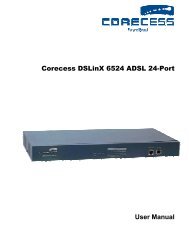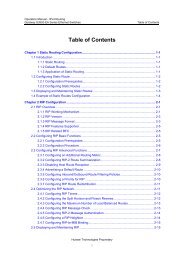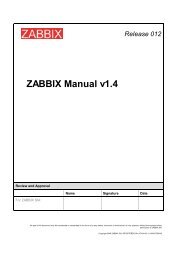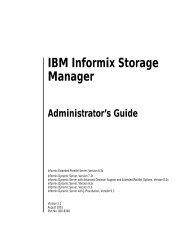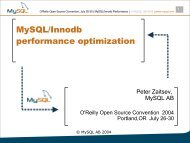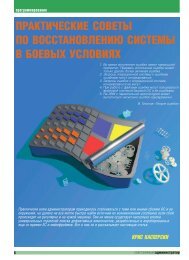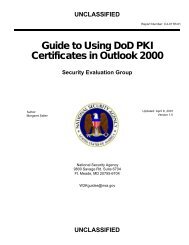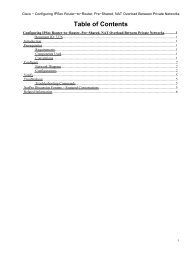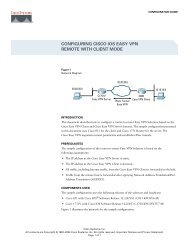Solaris Application Programming, 1/e - Chapter 4 - Parent Directory
Solaris Application Programming, 1/e - Chapter 4 - Parent Directory
Solaris Application Programming, 1/e - Chapter 4 - Parent Directory
You also want an ePaper? Increase the reach of your titles
YUMPU automatically turns print PDFs into web optimized ePapers that Google loves.
72 <strong>Chapter</strong> 4 Informational Tools<br />
The -kl option tells df to report disk space in kilobytes (rather than as the number<br />
of 512-byte blocks), and to only report data for local drives. The columns are<br />
reasonably self-explanatory and include the name of the disk, the size, the amount<br />
used, the amount remaining, and the percentage amount used. The final column<br />
shows the mount point. In this example, both the /data and the /export/home<br />
file systems are running low on available space. On <strong>Solaris</strong> 9 and later there is a -h<br />
option to produce the output in a more human-readable format.<br />
4.3.14 Reporting Disk Space Used by Files (du)<br />
The du utility reports the disk space used by a given directory and its subdirectories.<br />
Once again, there is a -k option to report usage in kilobytes. On <strong>Solaris</strong> 9 and<br />
later, there is also a -h option to report in a human-readable format. Example output<br />
from the du command is shown in Example 4.29.<br />
% du -k<br />
8 ./.X11-unix<br />
8 ./.X11-pipe<br />
3704 .<br />
% du -h<br />
8K ./.X11-unix<br />
8K ./.X11-pipe<br />
3.6M .<br />
The du command in Example 4.29 reported that two directories consume 8KB<br />
each, and there is about 3.6MB of other data in the current directory.<br />
4.4 Process- and Processor-Specific Tools<br />
4.4.1 Introduction<br />
Example 4.29 Example of Output from the du Command<br />
This section covers tools that report the status of a particular process, or the<br />
events encountered by a particular processor.<br />
4.4.2 Timing Process Execution (time, timex, and ptime)<br />
The commands time, timex, and ptime all report the amount of time that a process<br />
uses. They all have the same syntax, as shown in Example 4.30. All three<br />
tools produce output showing the time a process spends in user code and system<br />
code, as well as reporting the elapsed time, or wall time, for the process. The wall



